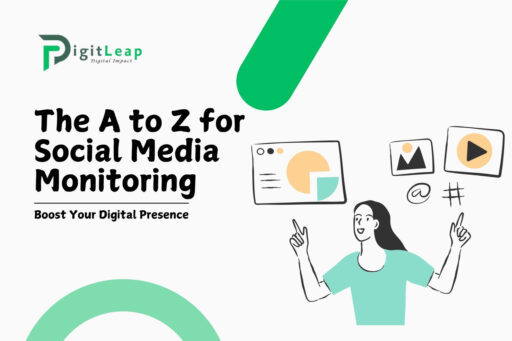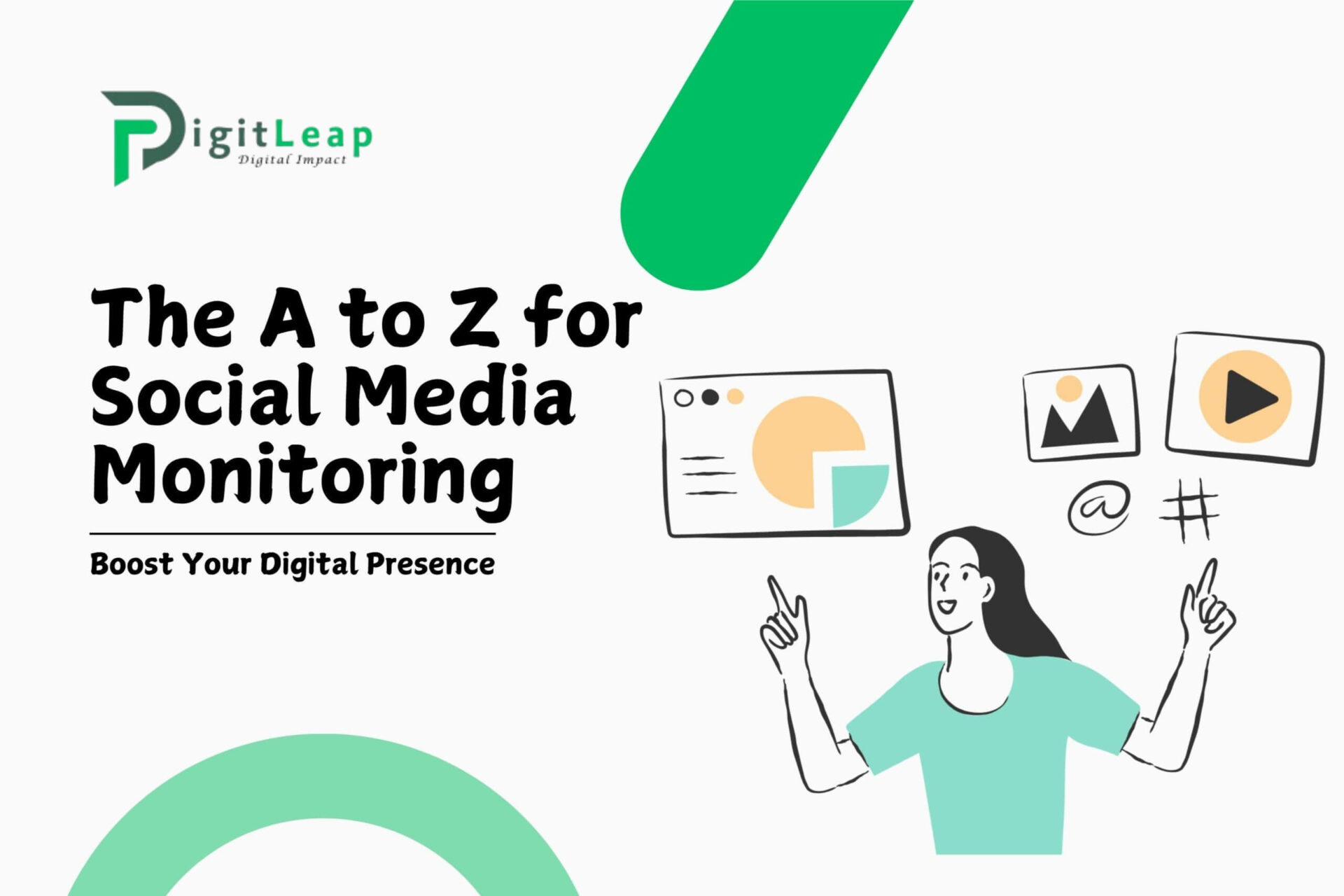The A to Z for Social Media Monitoring to Boost Your Digital Presence
In today’s fast-paced digital world, knowing what people say about your brand is crucial. Social media monitoring is the tool that enables you to keep a finger on the pulse of your audience, track mentions, manage reputation, and refine strategies based on real-time feedback. Here’s an A to Z guide on how to master social media monitoring to boost your digital presence, engage effectively, and stay ahead of the competition.
A – Analytics
Analytics is the backbone of social media monitoring. By reviewing engagement rates, follower growth, impressions, and interactions, you gain insights into what’s working and what isn’t. Analytics provides a quantitative look at your efforts, enabling you to make data-driven decisions that boost your strategy.
B – Brand Mentions
Tracking brand mentions, whether direct or indirect, helps you understand how people perceive your brand. Not everyone will tag your brand directly, so using monitoring tools to catch every mention—positive, negative, or neutral—gives you a well-rounded view of brand perception.
C – Competitor Analysis
Understanding your competitors’ social strategies is key. By monitoring their posts, audience interactions, and content performance, you can spot gaps in the market and identify tactics that resonate well with your shared audience.
D – Data-Driven Decisions
Effective social media monitoring means turning raw data into actionable insights. When you analyze trends, you can adjust content strategies to better meet your audience’s needs and preferences. This data-driven approach is essential for staying relevant in the fast-changing digital landscape.
E – Engagement Tracking
Engagement tracking goes beyond simply counting likes and shares. It includes comments, responses, and even the depth of interactions with your posts. High engagement usually signals that your content resonates with your audience, which strengthens your online presence.
F – Feedback Collection
Social media is one of the most direct feedback channels. Monitor customer reviews, ratings, and comments to understand what users like and where improvements are needed. Promptly addressing concerns and leveraging positive feedback enhances brand loyalty.
G – Goals Setting
Having clear goals for your social media monitoring efforts keeps your strategy focused. Do you want to improve customer satisfaction? Are you aiming to increase brand awareness or gain insights on product preferences? Identifying these objectives helps you track the right metrics and tailor your monitoring approach accordingly.
H – Hashtag Monitoring
Hashtags can extend your brand’s reach significantly. Tracking industry-relevant hashtags and those related to your brand reveals conversations your audience is involved in. Jumping into trending hashtag discussions boosts visibility and allows you to participate in relevant conversations.
I – Influencer Insights
Influencers have a significant impact on brand perception. Monitoring mentions by influencers or engaging with them can give you exposure to a wider audience and build credibility. Identify influencers who align with your brand values, then track the engagement and reach they generate for your mentions.
J – Journey Mapping
Customer journey mapping through social monitoring allows you to see how users move from awareness to consideration and, eventually, to action. This insight enables you to create content that meets your audience’s needs at each stage, optimizing for higher engagement and conversions.
K – Key Performance Indicators (KPIs)
KPIs are essential for measuring the success of your social media efforts. Common KPIs include reach, engagement rate, conversion rate, and customer satisfaction. Defining these indicators for your monitoring strategy helps you keep track of progress and see where adjustments are needed.
L – Listening, Not Just Monitoring
While monitoring is about tracking data, social listening digs deeper into sentiments and trends around your brand and industry. By listening to audience emotions and opinions, you can better understand what matters to them, adjust messaging, and show empathy in interactions.
M – Mentions and Metrics
Tracking mentions alone isn’t enough; you need to evaluate metrics around those mentions. Are positive mentions driving more traffic to your site? Are negative mentions affecting your brand sentiment? These metrics help you gauge the actual impact of what people say about you online.
N – Nurturing Relationships
Social media is not just a broadcasting tool; it’s a platform to connect with people. By responding to comments and engaging with users, you build stronger relationships that foster brand loyalty. Customers who feel heard and valued are more likely to remain loyal to your brand.
O – Optimization
Social media monitoring reveals what works and what doesn’t in real time. Use these insights to continuously optimize your posts, frequency, timing, and tone. Optimized content is more likely to reach and resonate with your audience, increasing your digital footprint.
P – Product Improvement
Customer comments on social media often offer valuable insights for product development. Whether it’s a suggestion for a new feature or feedback on an existing product, monitoring these conversations can help you make data-informed improvements that better meet customer needs.
Q – Quality Content
Social media monitoring helps you identify which types of content perform best with your audience. By focusing on high-quality, relevant content, you ensure that each post adds value and attracts genuine engagement, further boosting your presence.
R – Real-Time Monitoring
The digital landscape moves fast, and real-time monitoring is essential for staying relevant. Keeping an eye on real-time mentions and trending topics allows you to react quickly to positive or negative news, showing responsiveness and keeping your audience engaged.
S – Sentiment Analysis
Sentiment analysis tools allow you to gauge the mood of conversations around your brand. Understanding if people are talking about you in a positive, negative, or neutral way helps shape your responses and allows you to address any negative sentiments proactively.
T – Trend Identification
Identifying trends early helps keep your brand relevant and top-of-mind. Social media monitoring can reveal emerging trends that you can capitalize on, allowing you to engage with your audience on topics they care about most.
U – User-Generated Content
User-generated content (UGC) is a powerful way to enhance credibility and authenticity. Monitoring mentions for potential UGC allows you to showcase real users enjoying your product, building trust and encouraging others to join in.
V – Value-Driven Engagement
Engagement on social media should be meaningful, not just a numbers game. By focusing on value-driven interactions—providing answers, offering solutions, and genuinely connecting with users—you create a lasting impression that strengthens your digital presence.
W – Word-of-Mouth Marketing
Social media monitoring helps you track the impact of word-of-mouth referrals. Seeing how often people recommend your brand, and for what reasons, helps you understand where your strengths lie and where you might improve.
X – “X-Factor” Insights
Every brand has a unique selling point, or “X-factor.” Monitoring helps you see what users love most about your brand, giving you insight into your strengths. Leveraging this X-factor in your campaigns can set you apart in a crowded digital space.
Y – Yielding Results
The purpose of social media monitoring is to yield measurable results. By regularly reviewing your goals, KPIs, and progress, you can see if your efforts are paying off or if there’s room for improvement. Yielding tangible results gives your digital presence the boost it needs.
Z – Zeroing in on the Audience
Ultimately, social media monitoring is about zeroing in on your target audience’s needs and preferences. The more you understand your audience, the more tailored your content can be. This focus helps in building a stronger, more engaging digital presence that resonates with users.
Conclusion
Social media monitoring is more than a tool—it’s the foundation of an effective digital strategy. By tracking conversations, listening to your audience, and making data-informed adjustments, you create a strategy that’s responsive, relevant, and impactful. From brand mentions to competitor insights, mastering each part of the A to Z of social media monitoring positions you for stronger audience relationships and a thriving online presence.
At Digit Leap, we specialize in helping businesses enhance their digital footprint with smart, data-driven social media monitoring strategies. Ready to elevate your brand’s presence? Let’s work together to harness the full power of social media monitoring and take your digital presence to the next level.






